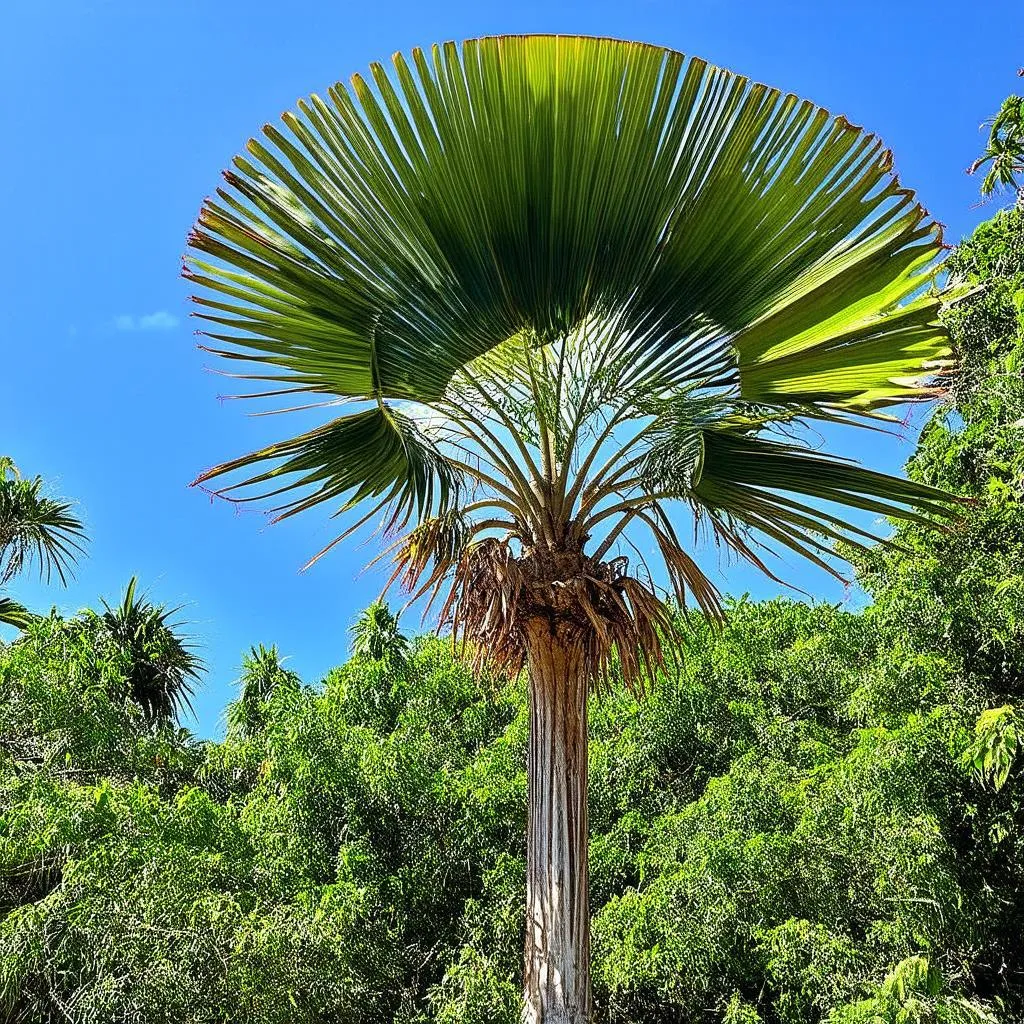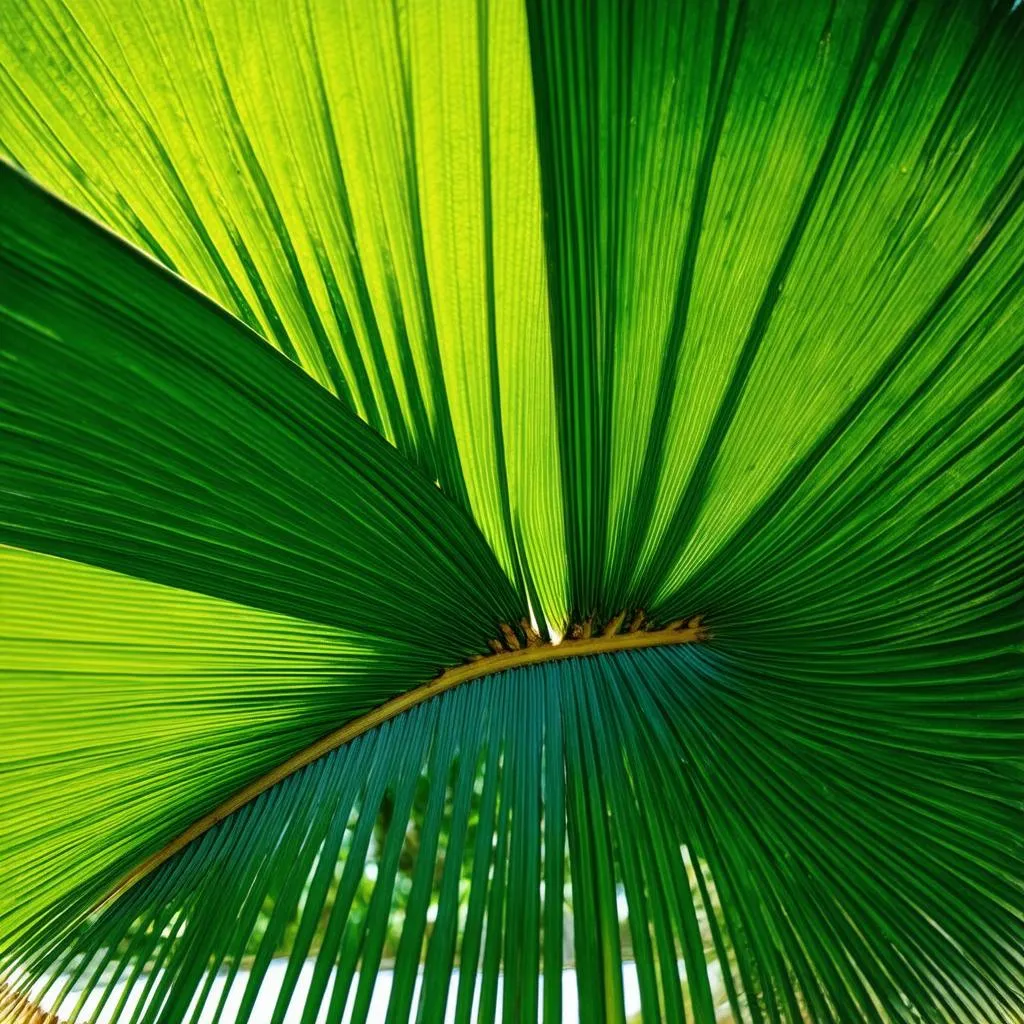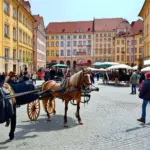Have you ever stumbled upon a plant so striking, so uniquely beautiful, that you felt compelled to know its story? That’s the effect the Traveler’s Palm (Ravenala madagascariensis) has on many. Native to Madagascar, this tropical beauty is a showstopper, but it’s far more than just a pretty face. Its nickname, the “Traveler’s Tree,” hints at its practical uses and the fascinating folklore surrounding it.
More Than Just a Name: Why It’s Called the Traveler’s Palm
Imagine yourself trekking through a dense, tropical forest. The sun is beating down, and your thirst is reaching a critical point. Suddenly, you stumble upon a Traveler’s Palm. Legend has it that a thirsty traveler could find relief by tapping into the plant’s water reserves, hence its name. While this is debatable among botanists, it adds a layer of intrigue to this already captivating plant.
A Palm in Disguise?
Interestingly, the Traveler’s Palm isn’t a true palm at all! It’s actually more closely related to the bird-of-paradise flower, which explains its dramatic fan-like leaves. These leaves, arranged in a spectacular symmetrical pattern resembling a peacock’s tail, can grow up to 10 feet long, creating a striking visual statement in any landscape.
Finding a Traveler’s Palm on Your Travels
Madagascar: The Jewel of the Indian Ocean
For the ultimate Traveler’s Palm experience, a trip to Madagascar is a must. This island nation off the coast of Africa is a biodiversity hotspot, and the Traveler’s Palm is one of its many natural wonders. Imagine exploring the lush rainforests of Ranomafana National Park, where you might spot a Traveler’s Palm standing tall amongst the endemic wildlife.
Beyond Madagascar: Where Else to Find Them
While Madagascar is its native home, the Traveler’s Palm is now cultivated in tropical and subtropical regions around the world. You might encounter this majestic plant gracing the landscapes of Hawaii, Florida, or even parts of Southern California. Keep an eye out for them in botanical gardens and arboretums – they’re always a crowd-pleaser!
The Traveler’s Palm in Feng Shui: A Symbol of Good Fortune
In the world of Feng Shui, the Traveler’s Palm is believed to bring good fortune and positive energy. Its upward-reaching leaves are thought to symbolize growth, prosperity, and new beginnings. Placing one in the east or southeast area of your home or garden is said to attract wealth and abundance, according to Feng Shui principles.
Planning Your Traveler’s Palm Encounter: A Few Tips
- Research your destination: If you’re specifically seeking out Traveler’s Palms, research destinations where they thrive, like Madagascar or botanical gardens known for their collections.
- Pack accordingly: Remember to pack light clothing, sunscreen, and insect repellent, especially if you’re venturing into tropical climates.
- Be respectful: When admiring these magnificent plants, remember they are part of a delicate ecosystem. Admire them from a distance and avoid disturbing their natural habitat.
Frequently Asked Questions about the Traveler’s Palm
Q: Can you really drink water from a Traveler’s Palm?
A: While the name suggests so, it’s best to err on the side of caution. The water stored within the plant might not be safe for consumption without proper purification.
Q: How tall do Traveler’s Palms grow?
A: In their natural habitat, they can reach impressive heights of up to 30 feet. However, cultivated varieties tend to be smaller.
Q: Can I grow a Traveler’s Palm in my backyard?
A: If you live in a tropical or subtropical climate with ample space, you might be in luck! These plants need plenty of warmth and sunlight to thrive.
Travelcar.edu.vn: Your Guide to Exploring the World
Planning a trip to Madagascar or another exotic locale? Be sure to check out TRAVELCAR.edu.vn for travel tips, destination guides, and insider advice to make your journey unforgettable. Whether you’re chasing waterfalls, ancient ruins, or the majestic Traveler’s Palm, let TRAVELCAR.edu.vn be your trusted travel companion.
 Travelers Palm in a Lush Landscape
Travelers Palm in a Lush Landscape
 Close-Up of Travelers Palm Leaves
Close-Up of Travelers Palm Leaves
Don’t forget to share your own Traveler’s Palm encounters in the comments below! Where have you seen these magnificent plants, and what stories do they evoke for you?

